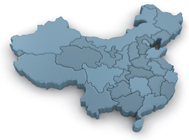
By any standard, China is impressive today. With its 1.3 billion people, dozens of crowded cities, and forests of apartment buildings reaching the sky—and requiring huge investments in infrastructure—this country is preparing for the future. While we build 100-bed hospitals, they build 1,000-bed hospitals. In fact they have driven up the price of cement worldwide due to their insatiable demand for construction.
And yet, for those who have the privilege of visiting China, it is not their impressive size or growth, not their international press coverage, and not even their development or exports that distinguishes China today. It is surely the gracious attitude, the always solicitous approach to strangers, that one remembers after each visit.
Loma Linda’s connections with China go back 100 years to when we first started sending graduates to this great country. Dr. Harry Miller, actually a graduate of John Harvey 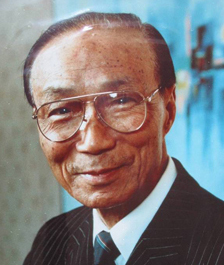 Kellogg’s American Medical Missionary College, the predecessor to Loma Linda University, was only one of many who went to China. His lifelong commitment to China eventually earned him the sobriquet “China Doctor.” During the decades he spent there, he invented soymilk to combat childhood malnutrition, built some 20 Adventist hospitals, and treated thousands of patients. All that was lost, or so we thought, during the Great March when Mao Tse Tung moved across the country with his doctrine of atheistic Communism.
Kellogg’s American Medical Missionary College, the predecessor to Loma Linda University, was only one of many who went to China. His lifelong commitment to China eventually earned him the sobriquet “China Doctor.” During the decades he spent there, he invented soymilk to combat childhood malnutrition, built some 20 Adventist hospitals, and treated thousands of patients. All that was lost, or so we thought, during the Great March when Mao Tse Tung moved across the country with his doctrine of atheistic Communism.
So when feelers first started surfacing in the late 1980s about returning to China, they were viewed with some caution. Secret visits by Communist Party leaders, high level discussions with church leaders, and offers of financial assistance from Sir Run Run Shaw, a Hong Kong movie mogul with roots in China, finally convinced Loma Linda leadership that this was a real offer, a once in a lifetime opportunity that should at least be attempted. Recognition needs to go to Neal Wilson, Lyn Behrens, David Hinshaw Sr. and others who were able to see the potential and accept the risks involved. While China seems relatively “open” today, it was not 25 years ago, when worship was done behind locked apartment doors and one always wondered who was listening.
And so a relationship began, one that has surely had bumps along the way, times when we all wondered whether we could continue, whether we should continue. But challenges were overcome, acceptance and trust developed, and the Loma Linda University–Sir Run Run Shaw Hospital partnership is envied today across China and indeed across all of Asia.

A number of us have just spent two glorious days celebrating the 20th anniversary of the opening of Sir Run Run Shaw Hospital (an affiliate of Zhejiang University), now a 1,200-bed marvel of both modern technology and compassionate patient care. As I listened to the stories of all those from our side who have spent years on the ground, gently mentoring and establishing a new health care culture at Sir Run Run Shaw Hospital, it was clear that this was no ordinary relationship. With hugs and tears, friendships forged through cultural misunderstandings and long discussions had matured into mutual respect and love. Chinese and American counterparts in management, nursing, medicine, teaching and research who had worked together through the years were reunited once again during these precious few days.
This unique partnership continues, spearheaded by the LLUH Global Health Institute and the Center for International Collaboration at Sir Run Run Shaw Hospital. Kudos go to Jan Zumwalt at the Global Health Institute for leading the effort for many years, assisted by Bing Frazier. More than 300 staff members from Sir Run Run Shaw Hospital have come to Loma Linda for short- and long-term mentorship rotations in 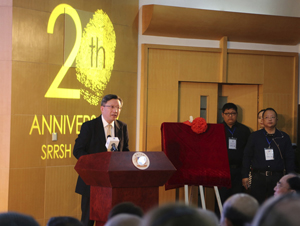 all conceivable areas of making a modern hospital effective. What is so impressive is how they have captured the soft, often subtle, culture of Loma Linda—our values of compassion and integrity, of understanding and acceptance of suffering and death, of sharing hope and keeping promises with both staff and patients. The focus is now shifting more to education, of neutralizing the gap between professor and student, encouraging mentoring and practice.
all conceivable areas of making a modern hospital effective. What is so impressive is how they have captured the soft, often subtle, culture of Loma Linda—our values of compassion and integrity, of understanding and acceptance of suffering and death, of sharing hope and keeping promises with both staff and patients. The focus is now shifting more to education, of neutralizing the gap between professor and student, encouraging mentoring and practice.
Lady Mona Shaw was there for the celebrations, representing her husband, who recently died at 106. Party figures and church leaders sat side by side as the incredible journey of the past 20 years was recounted. The accomplishments of Sir Run Run Shaw Hospital are legion, recognized now by the central government and sister institutions who all want to develop the “Shaw” model of hospital leadership. Even worship is now more open, with four Adventist churches full of about 550 young and old meeting regularly in the city of Hangzhou. Six nursing staff members from Sir Run Run Shaw Hospital and Zhejiang University Children’s Hospital have completed the LLU master’s degree in nursing off-campus program in Thailand. Two nurses from Zhejiang Province are now pursuing doctoral degrees from LLU School of Nursing. Loma Linda University is displayed in bold letters on the front of the building and even the seal of the hospital recognizes its two “parents”—Zhejiang Medical University and Loma Linda University.
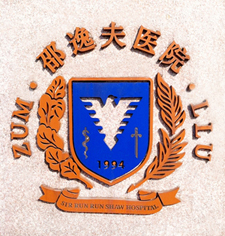
So where do we go now? We have spent hours discussing that, both on this side of the water and while in Hangzhou. Opportunities abound to continue and grow. Sir Run Run Shaw Hospital leadership now manages Xiasha Hospital, a new 1,200-bed hospital built in another part of the city by the local government. The Zhejiang University Children’s Hospital is being expanded, adding to its 850 beds with a whole new complex and an additional 800+ beds and outpatient facilities to match. The size of these institutions is always amazing, but necessary in this city of nearly nine million, with many more patients coming from the province and countryside for specialized care.
To date, our efforts have been focused on strengthening these government facilities. They are not dependent on us and clearly are ready to grow and thrive on their own. Should we respond to the many other requests from government hospitals to help them, to recreate the Sir Run Run Shaw model for them? Or is it possible now to consider something that is even more identified with Loma Linda, sharing our unique values and perspectives even more fully? We certainly have “brand” recognition and a solid reputation in the country. What is the best way to proceed for the future?
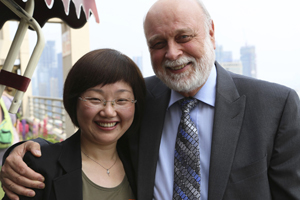
Those discussions will continue, even as we maintain our special relationship with Sir Run Run Shaw Hospital. Right now it is time to recognize and celebrate a very unique partnership that has been able to transcend political and cultural boundaries. I want to personally thank the nearly 1,000 faculty, staff, students, alumni, and friends who have invested their time and energy in this endeavor. Your impact is being felt by millions as the lessons learned are replicated across China. This type of relationship is what makes Loma Linda so special and unique. Money can’t buy this. Politics can’t mandate it. It comes from the heart, and can only be nurtured in a culture of love and respect. You have made this happen, and both Loma Linda and China are indebted to you.